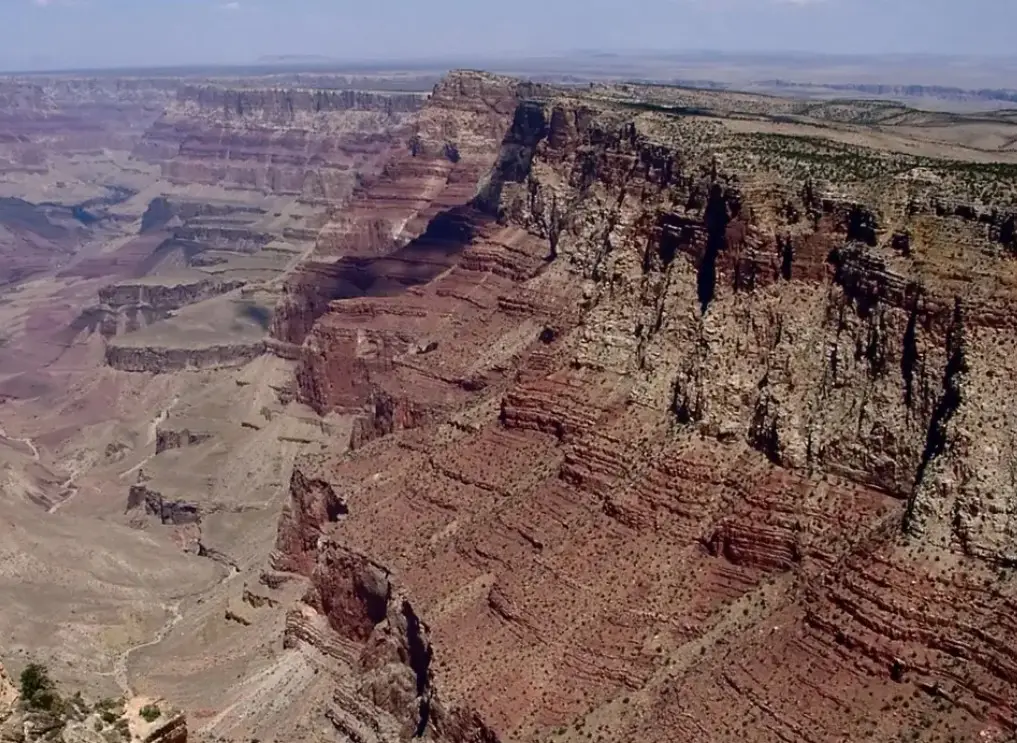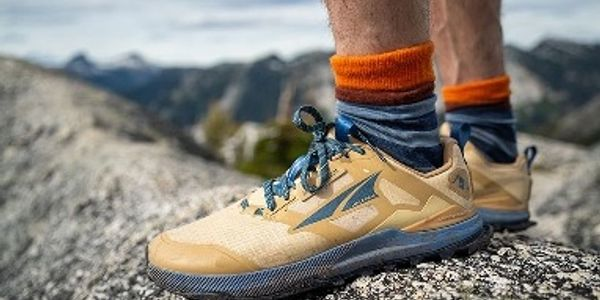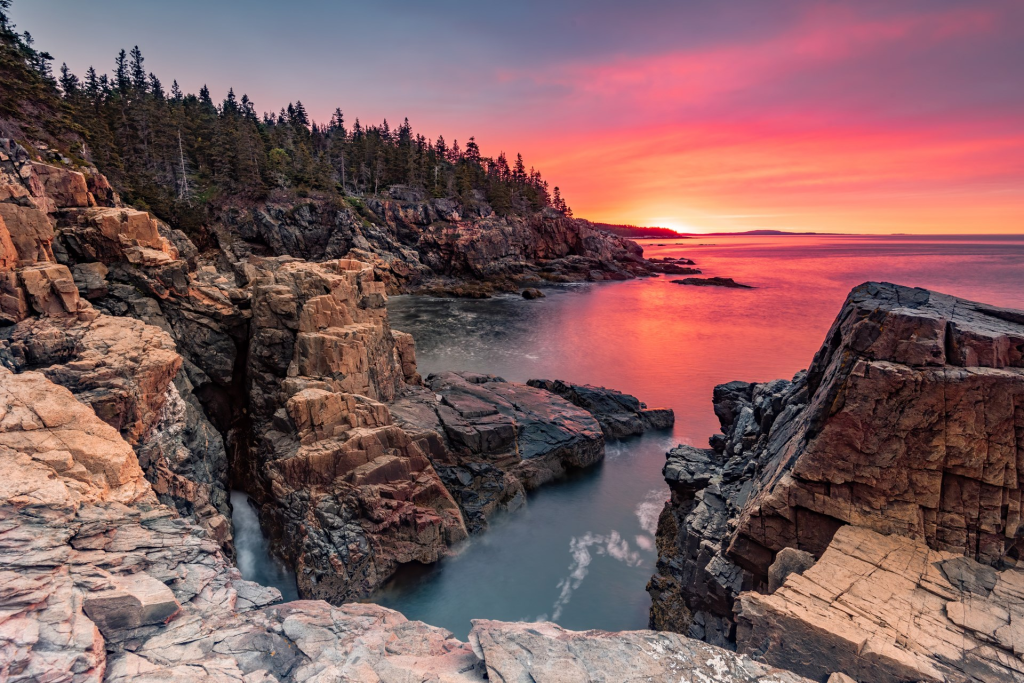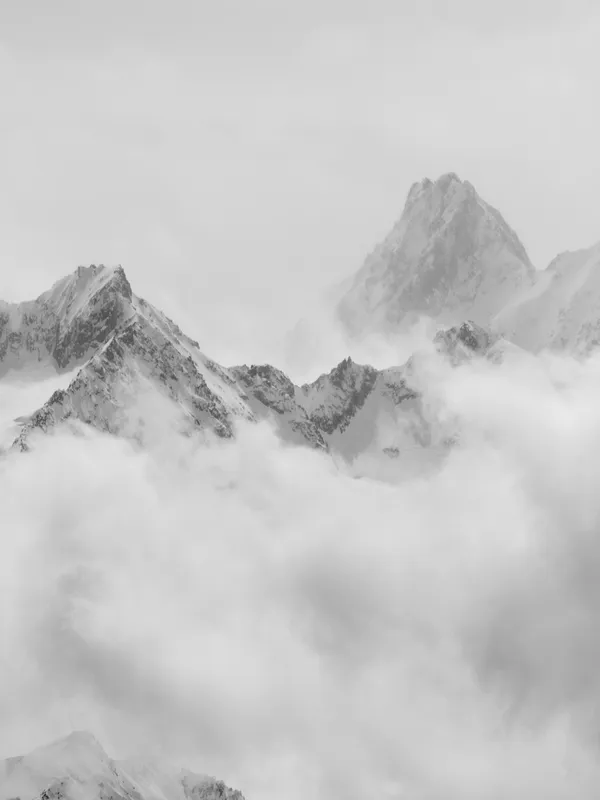My Grand Canyon Hiking Guide: Navigating the Park
By Cap Puckhaber, Reno, Nevada
Hey there, fellow adventurers! Cap Puckhaber here, your guide to all things hiking at TheHikingAdventures.com. I’ve trekked countless trails, but nothing prepared me for the heartbreaking news about the Grand Canyon fire that swept through the North Rim. This blaze, known as the Dragon Bravo Fire, left a mark on one of America’s most cherished landscapes, destroying the historic Grand Canyon Lodge and changing the game for travelers, hikers, and backpackers.
I’ve been fielding so many questions and, frankly, processing my own sadness over the loss. But the canyon endures, and so does our spirit of adventure. We just need a new plan. Let’s unpack what happened, how it affects your plans, what’s open, and how you can still have an incredible Grand Canyon experience. Grab a coffee, settle in, and let’s talk about this fiery chapter in the Grand Canyon’s story and what it means for your next trip.
Grand Canyon Fires: What We Lost
This summer was a brutal one for the park. The tragedy of the Dragon Bravo Fire is still hard to process for those of us who consider the North Rim a second home. This wasn’t just a small wildfire; it was a catastrophic event that has reshaped the park for years to come.
The Dragon Bravo Fire: A Lightning Strike’s Devastation
So, what actually happened? Picture this: it’s July 4, 2025, and a lightning strike sparks a blaze on the Grand Canyon North Rim. That’s how the Dragon Bravo Fire started, in a remote area south of the Basin near the W1, according to the National Park Service. I’ve seen storms roll through Arizona’s high desert before, and let me tell you, they can be wild. Lightning cracks like a whip across the sky. This particular strike ignited a fire that would soon spiral out of control.
It was fueled by hot, dry conditions and relentless, gusty winds. By July 11, the fire had grown from a manageable 120 acres to a staggering 1,500 acres. By July 14, it had scorched 5,716 acres with zero percent containment. The nearby White Sage Fire, also sparked by lightning, added to the chaos, burning over 40,000 acres north of the park. Together, these fires turned the Grand Canyon National Park North Rim into a battleground for over 295 fire personnel.
Was It Arson? The Cause Uncovered
Let’s clear this up right away because I’ve seen the rumors online. The Dragon Bravo Fire was not arson. It was a natural event, triggered by a lightning strike, as confirmed by the National Park Service and other authorities. I know how rumors can spread, especially when emotions run high after losing something as iconic as the Grand Canyon Lodge. But the evidence points to Mother Nature, not human malice. The real controversy, though, lies in how the fire was managed. For now, rest assured this was a case of nature doing what it does best: throwing curveballs.
Was the Grand Canyon Lodge Lost? The Harsh Reality
Yes, the Grand Canyon Lodge was completely destroyed. This is the part that hits me the hardest. On the night of July 12, the Dragon Bravo Fire exploded, driven by 20- to 40-mph winds, and tore through the North Rim’s developed area. Despite firefighters’ heroic efforts, the lodge and dozens of North Rim cabins were reduced to ash.
The fire ultimately destroyed between 50 and 80 structures. This includes the visitor center, gas station, wastewater treatment plant, administrative buildings, and critical employee housing. Thankfully, no one died. All staff, residents, and visitors—about 500 people—were safely evacuated by July 11. That’s a huge relief, but the structural and historical losses are just devastating.
A Personal Loss: Remembering the Historic Lodge
Let’s take a moment to honor the Grand Canyon Lodge North Rim, a true gem of the Grand Canyon National Park North Rim. Designed by architect Gilbert Stanley Underwood in 1928, the original lodge burned down in 1932 and was rebuilt in 1937. It was a National Historic Landmark.
This wasn’t just a hotel; it was the heart of the North Rim. I remember standing in its iconic Sun Room, coffee in hand, just staring out at the canyon through those massive windows. You felt like you were part of something timeless. The dining room, with its soaring windows, offered jaw-dropping views that made every meal feel like a spiritual experience. For many seasonal workers, it was home. Losing it feels like losing a piece of Arizona’s soul.
The Investigation: Could This Have Been Prevented?
Here’s where things get sticky. The Dragon Bravo Fire was initially managed as a “confine and contain” burn to clear excess vegetation. This is a common strategy to reduce future fire risks. But Arizona’s summer was brutally dry, with scorching temperatures and low humidity. When winds picked up on July 11, the fire jumped containment lines, and the “controlled” burn became a monster.
Arizona Governor Katie Hobbs has called for an independent investigation into the National Park Service’s handling of the fire. She questioned why it was managed as a controlled burn during such risky conditions. I’ve hiked the North Rim enough to know how fast conditions can change. Last summer, I was caught in a sudden storm near the North Kaibab Trail, and the wind was unreal. Could better forecasting have saved the lodge? Maybe. The Interior Department insists the fire wasn’t a controlled burn, calling the allegation inaccurate. Still, the debate rages on, and we all deserve answers.
How Fire Impacts Your Grand Canyon Plans

Okay, let’s get practical. The Dragon Bravo Fire has completely flipped the script for anyone planning to visit the Grand Canyon National Park.
The North Rim is Closed
This is the most important takeaway. The Grand Canyon North Rim is closed for the rest of the 2025 season, which typically runs from May 15 to October 15. The damage is too extensive. If you had Grand Canyon Lodge North Rim reservations or planned to stay at North Rim cabins, those are all canceled. The park service is aiming for a potential reopening in 2026, but that is far from guaranteed.
What About Hiking and Backpacking?
This is the news that gutted me and my fellow backpackers. The closure extends to all inner canyon trails originating from the North Rim. This includes the entire North Kaibab Trail. Because of the fire and the resulting hazards, all rim-to-rim hiking is impossible for the foreseeable future.
Even more, a chlorine gas leak from the destroyed wastewater treatment plant forced the closure of trails below the rim. This means Bright Angel Trail below Havasupai Gardens and the South Kaibab Trail are also impacted. Even Phantom Ranch was evacuated. Rafters on the Colorado River were told to bypass Phantom Ranch. The entire inner canyon corridor is effectively shut down.
The Ripple Effect on Local Towns
The North Rim supports hundreds of jobs in nearby towns like Jacob Lake and Fredonia. With the Grand Canyon Lodge gone, local hotels near North Rim Grand Canyon, like the Jacob Lake Inn, are bracing for a tough season. I’ve stayed at these spots many times. The owners are like family, and my heart just goes out to them. This closure impacts an entire community, not just us hikers.
A New Challenge: Methane Gas Leaks
As if a catastrophic fire wasn’t enough, the park faced another safety issue this year. On January 16, 2025, officials confirmed a separate gas leak in a remote area of the Grand Canyon National Park. This wasn’t related to the fire’s chlorine leak; this was a methane leak from a natural gas line running through the park.
What Happened with the Gas Leak?
The leak was traced to a natural gas line that supplies energy to nearby facilities. According to the National Park Service, the leak was identified during routine safety inspections. It was located in an area away from popular tourist destinations like the South Rim or Bright Angel Trail, but it was still within the park’s boundaries.
Early reports suggest it may have been caused by an aging pipeline. This is a common issue with older infrastructure in remote areas. Experts believe natural factors like shifting soil or weather damage could have played a role. The Grand Canyon is subject to extreme temperature fluctuations that can stress underground pipes. The gas involved was methane, a potent greenhouse gas.
How This Affects Hikers and Park Safety
Fortunately, there were no reported injuries or illnesses. No tourists were in the immediate vicinity when it was discovered. The Grand Canyon National Park’s main visitor areas are not directly served by this gas line, so public access was not significantly disrupted.
However, officials did cordon off the area near the leak. Some administrative buildings and staff quarters were briefly evacuated as a precaution. Gas services to certain areas were suspended until the leak was safely sealed. It was a serious reminder of the challenges of maintaining infrastructure in such a wild and sensitive environment.
Park Service Response and Current Status
Upon discovering the leak, the National Park Service and local utility companies worked quickly to contain and repair it. Emergency crews sealed the leak, and experts used advanced detection technologies to ensure the area was safe. The park service also initiated a review of the infrastructure to prevent future incidents.
While the immediate threat has been addressed, and the Grand Canyon remains open (outside of the fire-impacted areas), the incident highlights the importance of monitoring. For now, officials are confident the gas leak is contained. It’s just one more thing to be aware of as the park manages multiple, complex challenges this year.
Planning Your Grand Canyon Hikes

So, the North Rim is closed and the inner canyon is a mess. What does that mean for your trip? It means all eyes are on the South Rim. The South Rim remains open and is still one of the most incredible places on Earth. The South Rim is where 90% of visitors go anyway. It’s open all year, 24 hours a day. This is where you’ll find Grand Canyon Village, Mather Point, Yavapai Point, and the trailheads for the Bright Angel and South Kaibab trails (though, as mentioned, they have partial closures right now).
You will need to adjust your expectations. With the North Rim completely closed, the South Rim will be even more crowded than usual. This means trails will be packed, parking will be a nightmare, and lodging will be booked solid. My best advice is to plan far, far in advance.
Best Times to Visit the South Rim
The Grand Canyon is a year-round destination, but the best time to hike is generally from late spring to early fall. Specifically, I love September and October. The weather is cooler, and the summer crowds are thinning. Spring (March to May) is also fantastic, but you can still get snow at the rim.
I would strongly advise against hiking into the canyon during the summer. Temperatures at the bottom can be drastically warmer than at the rim. I’m talking 115°F or more. It’s dangerously hot. The South Rim itself is pleasant in summer, but it’s not the time for a big hike.
Busiest Times to Avoid
The busiest times at the Grand Canyon are, without a doubt, the summer months from June to August. Families and tourists flock to the park. This is when the South Rim sees its highest number of visitors. You’ll find crowded trails, limited parking, and long wait times at visitor centers.
If you’re seeking solitude, this is not the time to go. With the 2025 fire, I expect this crowding to be even worse. If you must go in summer, go early. I mean, be at the trailhead before 6 AM. Otherwise, you’ll spend more time looking for parking than looking at the canyon.
Where to Stay Now: Lodging Alternatives
With the Grand Canyon Lodge North Rim gone, the lodging game has changed. You’ll be focusing entirely on the South Rim or the nearby town of Tusayan.
South Rim Hotels: Booking Essentials
The lodges inside the park are the most convenient. These include places like The Grand Hotel South Rim, El Tovar Hotel, Bright Angel Lodge, Maswik Lodge, and Yavapai Lodge. They are all open. I stayed at Yavapai Lodge once; it was cozy, close to the rim, and a bit more budget-friendly than the historic El Tovar.
You must book these early. I’m not kidding. Reservations open up 13 months in advance, and they fill up within hours. If you want to stay inside the park, you need to be online the day reservations open.
Hotels Near the North Rim (For Future Planning)
What about the places near the North Rim? Hotels like Jacob Lake Inn or Kaibab Lodge are still there. They are about 18-45 miles from the North Rim. They’re great, rustic spots.
Sadly, with the North Rim closed, there isn’t much reason to stay there unless you’re exploring the surrounding national forest. Please consider supporting these businesses if you’re in the area. They are hurting right now. When the North Rim eventually reopens, I’ll be booking a room at Jacob Lake Inn immediately.
A Note on Cabins and Camping
For a more rustic stay, you can check out the South Rim cabins at Bright Angel Lodge or Maswik Lodge. Again, these book up just as fast as the hotel rooms.
If you’re a backpacker like me, your options are Mather Campground or Desert View Campground at the South Rim. Mather is in Grand Canyon Village and is huge. It’s great for tent or RV camping. Desert View is smaller and a bit further east, but it’s first-come, first-served, which I sometimes prefer. Just be ready for heat and crowds.
Pro-Tip: Booking Your Stay
Here’s my personal strategy. First, I try to get a room inside the park 13 months out. If I fail (which I often do), I book a refundable room in the town of Tusayan, right outside the park entrance. Then, I check the official park lodging website daily for cancellations. People cancel all the time. I’ve snagged last-minute rooms at Bright Angel Lodge this way.
The Ultimate Grand Canyon Hiking Guide
Hiking the Grand Canyon is a bucket-list experience. Even with the North Rim closures, the South Rim offers a lifetime of adventure. But it requires proper preparation.
Do I Need a Permit for My Hike?
This is one of the biggest questions I get. The good news is that for any day hikes, no permits are required. You can just park, walk to a trailhead, and start your adventure. This is great for most visitors who just want a taste of the inner canyon.
You can hike a few miles down the South Kaibab or Bright Angel trails and come back up. Just remember, a “day hike” means you must be back out by dark. And right now, you need to check the NPS.gov trail status page daily for fire-related closures.
Let’s Talk Backcountry Permits
Now, if you want to camp overnight below the rim, you absolutely need a backcountry permit. This includes camping at Bright Angel Campground (when it reopens) or any of the designated backcountry sites. These permits are notoriously hard to get.
You must apply through the Grand Canyon’s official backcountry permit lottery system. It’s advisable to apply up to four months before your planned trip. I usually send in my application on the very first day possible. It’s the only way to have a shot at the popular corridor trails.
Parking at the South Rim: My Strategy
Parking is the first challenge you’ll face. The lots near the South Rim Visitor Center are the most popular. If you’re visiting during peak season, these lots can be completely full by 9 AM.
Here’s what I do: I park my car in Tusayan and take the free park shuttle bus in. Or, I arrive at the park before 7 AM and park at the Backcountry Information Center. From there, I can walk to the Bright Angel trailhead or hop on the free shuttle to get to the South Kaibab trailhead. The shuttles are easy and efficient.
How to Enter the Canyon (And Which Trail to Pick)
From the South Rim, you have two main trails into the canyon: the Bright Angel Trail and the South Kaibab Trail. Most hikers use these well-marked trailheads. You can also take a mule ride, but I’m a hiker, so I stick to my own two feet.
The trails range in difficulty, but let’s be clear: they are all hard. The climate is no joke. Temperatures at the bottom can be 20-30 degrees warmer than at the rim. Always bring more water than you think you need.
The “Big Two” South Rim Day Hikes
If you’re a fit day hiker, you have a couple of great options (assuming trails are fully open). My favorite is hiking the South Kaibab Trail to Cedar Ridge. It’s about 3 miles round-trip with 1,100 feet of elevation change. The views are just epic.
Another classic is hiking the Bright Angel Trail to Havasupai Gardens (formerly Indian Garden). This is a much longer day at 9 miles round-trip. It’s greener and has more shade, which is a big plus. Both are strenuous.
A Hiker’s Mistake: Underestimating the “Up”
Here is the biggest mistake I see people make. They get to the rim, feel great, and start hiking down. It’s easy. The views are amazing. So they keep going. They forget the cardinal rule of the Grand Canyon: going down is optional, coming up is mandatory.
I once watched a group in flip-flops and with one bottle of water between them head down the South Kaibab trail at noon in July. I warned them, but they just waved. They didn’t realize that every single step down is a step they have to climb back up, in the heat, at elevation. Plan your hike based on how much energy you’ll have for the climb out, not the walk down.
Gear, Safety, and Guides
Hiking here is serious. This isn’t your local park. You need the right gear and the right mindset to stay safe.
My Essential Gear List for a Canyon Day Hike
Even for a short hike, I never go without the “Ten Essentials.” My daypack always has:
- Water: At least 3 liters per person. I carry a hydration bladder and an extra bottle.
- Food: Salty snacks, energy bars, and a sandwich. You need to replace the salt you sweat out.
- Sun Protection: A wide-brimmed hat, sunglasses, and sunscreen. The sun is intense.
- First-Aid Kit: Blister care is the most important part.
- Headlamp: Even if you plan to be back by noon. A sprained ankle could keep you out until dark.
- Trekking Poles: My knees thank me on every single switchback.
- Layers: A light jacket, even in summer. It can be cool at the rim in the morning.
- Navigation: I use the AllTrails app on my phone (with downloaded maps) and a paper map as a backup.
For a complete list, check out this great backpacking checklist from REI. It’s a fantastic resource for making sure you don’t forget anything critical.
Hiring a Guide: Is It Worth It?
For first-time hikers or those unfamiliar with desert terrain, hiring a guide can be a valuable option. I’ve hiked with friends who are guides, and their knowledge is incredible. They know the trails, the safety protocols, and the geology of the canyon.
A good guide can enhance your experience and keep you safe. The Grand Canyon offers guided hikes and mule rides. You can book these services through trusted tour companies. If you’re nervous about hiking alone, I highly recommend looking into it.
Rebuilding and the Future of the North Rim
The Grand Canyon Lodge was rebuilt after the 1932 fire, and there’s hope it’ll rise again. The spirit of the North Rim is strong.
What’s Next for the Lodge?
The National Park Service and local communities are already rallying. I spoke with a guide friend, Nate Loper from A Different View Tours, who’s optimistic about grassroots efforts to rebuild. “It’s not just a lodge—it’s home for so many,” he told me.
But rebuilding won’t be quick or cheap. The lodge’s National Historic Landmark status means any reconstruction will need to balance modern safety with historic integrity. For now, the focus is on containing the fire’s aftermath and assessing the full damage. The South Rim will carry the load for Grand Canyon hotels, but the North Rim’s unique magic will be deeply missed.
How to Stay Informed
Want to stay updated? Things are changing fast. Here are the trusted sources I use for the latest on the Grand Canyon fire and recovery:
- National Park Service: Check www.nps.gov/grca/planyourvisit/conditions.htm for official updates on closures.
- InciWeb: This federal wildfire tracker inciweb.wildfire.gov has real-time data on fire containment and impacts.
- TheHikingAdventures.com: I’ll keep posting updates on my site, along with tips for South Rim lodging and alternative hiking plans.
Final Thoughts from the Trail
The loss of the Grand Canyon Lodge North Rim is a punch to the gut. I remember my first night there, sipping coffee in the dining room, watching the sunset paint the canyon in gold. That memory is still vivid, even if the lodge is gone. But the Grand Canyon is more than one building. It’s a force of nature, and it will endure.
For hikers, backpackers, and travelers, this is our new reality for 2025. It’s a chance to explore the South Rim in more depth or support those local businesses in Jacob Lake and Fredonia. The North Rim will return, and when it does, I’ll be the first in line, ready to hike the North Kaibab and toast to its comeback.
Until then, your Grand Canyon adventure is still possible. It just requires more planning, more patience, and a pivot to the South Rim. Adventure responsibly, respect the closures, and let’s keep the Grand Canyon’s spirit alive.
Cap Puckhaber, signing off from TheHikingAdventures.com—see you on the trails!
About the author
Cap Puckhaber is a marketing strategist, finance writer, and outdoor enthusiast. He writes across CapPuckhaber.com, TheHikingAdventures.com, SimpleFinanceBlog.com, and BlackDiamondMarketingSolutions.com. Follow him for honest, real-world advice backed by 20+ years of experience.
My Picks for Zion National Park Hikes
National Park Reservation System Explained

Join our Mailing List
Sign up with us now and be the first one to know about our exclusive offers and product updates.
By submitting your information, you`re giving us permission to email you. You may unsubscribe at any time.
Follow Cap Puckhaber on Social Media


About the Author: Cap Puckhaber
Backpacker, Marketer, Investor, Blogger, Husband, Dog-Dad, Golfer, Snowboarder
Cap Puckhaber is a marketing strategist, finance writer, and outdoor enthusiast from Reno, Nevada. He writes across CapPuckhaber.com, TheHikingAdventures.com, SimpleFinanceBlog.com, and BlackDiamondMarketingSolutions.com.
Follow him for honest, real-world advice backed by 20+ years of experience.





